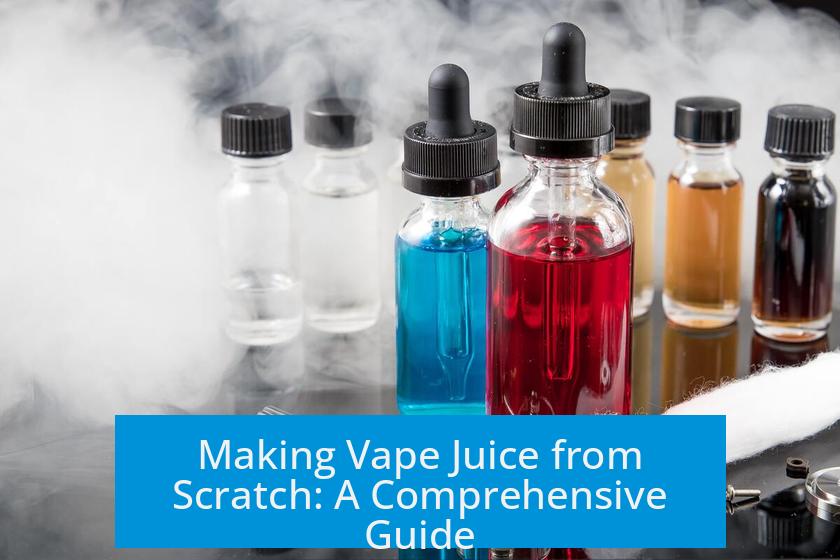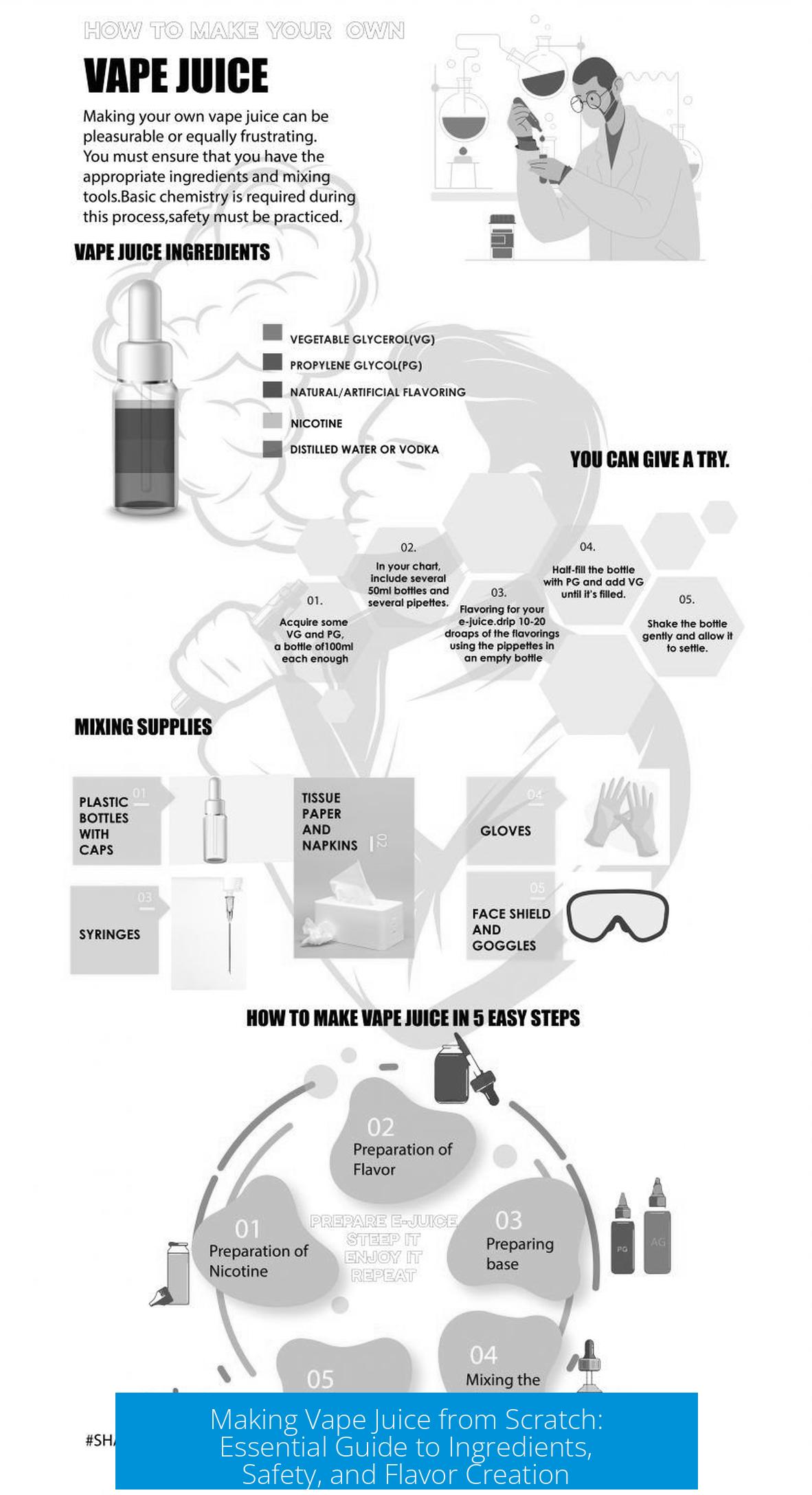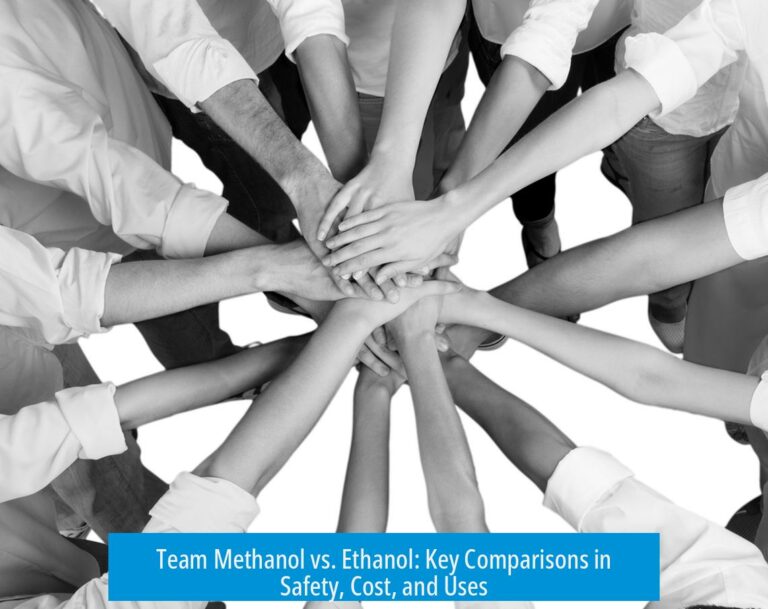Making Vape Juice from Scratch: A Comprehensive Guide

Making vape juice from scratch involves mixing propylene glycol (PG) or vegetable glycerin (VG) with flavorants and optionally nicotine, ensuring precise measurements and strict safety precautions to produce a safe and satisfying e-liquid.
1. Basic Ingredients and Precise Mixing
Vape juice, or e-liquid, typically blends a base of propylene glycol (PG) or vegetable glycerin (VG) with flavoring agents. Depending on the user’s preference, nicotine may be added as either freebase nicotine or nicotine salts.
Accurate measurement and calculation of amounts are critical. Incorrect ratios or nicotine concentration can produce a juice with poor flavor or pose safety hazards. For example, improperly measured nicotine can cause adverse reactions, including nausea or toxic exposure.
- Base liquids: Propylene glycol (thinner, carries flavor well) and vegetable glycerin (thicker, produces more vapor).
- Flavorings: Concentrated flavor compounds or preformulated flavor concentrates.
- Nicotine: Optional, either freebase or salts, added to desired concentration.
2. Safety Precautions when Handling Nicotine
Nicotine, especially in concentrated form, is toxic and can be absorbed through the skin, making personal protective equipment (PPE) essential during handling. Gloves are the minimum protective gear recommended.
Even small skin exposure to nicotine can lead to dangerous effects. Extreme caution is necessary to avoid overdose, which can be fatal. Proper ventilation and careful storage are also critical to maintain safety.
3. Creating Flavors: Using Preformulated Concentrates versus Pure Molecules
While theoretically possible, creating flavors from pure flavor molecules is highly complex. The concentration of some components in e-liquids can be less than 0.1%, making precise measurement difficult without specialized lab equipment and chemical expertise.
Most DIY e-juice makers favor preformulated flavor concentrates, which combine multiple molecules into a balanced, user-friendly blend. These concentrates simplify the mixing process and reduce trial and error.
- Preformulated concentrates can contain 10–15 different molecules.
- Concentrations within these concentrates vary widely, from 75% to under 0.5% per component.
- Popular vendors include The Perfumer’s Apprentice (TFA), Capella Flavors, and Bull City Flavors.
- Online platforms like All the Flavors offer recipe ideas for community experimentation.
For those interested in flavor molecule data, databases such as FlavorDB provide detailed information.
4. Temperature Effects and Chemical Reactions During Vaping
The heating element in a vape device can reach high temperatures, potentially causing chemical changes to the e-liquid. If the coil overheats, it can cause partial decomposition of compounds in the vape juice, including creating harmful aldehydes.
Inhaling these decomposition products can harm the respiratory tract. Users should avoid “dry hits” or burnt juice by properly managing wattage and coil temperature.
Keeping vape temperatures below critical thresholds reduces the formation of unwanted byproducts and protects throat and lung health.
5. Legal and Tax Considerations on Flavors and Supplies
Some jurisdictions impose heavy taxes on vape ingredient purchases, particularly flavorings sold in vape stores. For example, Canada applies a 20% tax plus additional levies on vape-related products purchased in specialized shops.
An alternative is buying food-grade flavorings from baking or gourmet supply stores. These products avoid vape-related taxes because they are intended for food use, though they often provide safe and effective flavors for e-liquid mixing.
Because flavoring primarily involves aroma compounds, selecting food-grade flavorings with the desired scent generally results in a similar taste profile suitable for vaping.
6. Flavor Storage and Shelf Life
Flavor concentrates have varying shelf lives. Some, like whisky-flavored concentrates, degrade quickly and lose potency, whereas others such as banana flavor remain stable for extended periods.
Given costs and shelf life variability, it is advisable to purchase flavor concentrates in modest quantities to avoid waste from spoilage.
7. Additional Tips and Considerations
- Vegetable oil should never be used as a base or additive in vape juice due to risks of lung injury.
- Due to potential censorship or non-neutral search results, using alternative search engines such as DuckDuckGo or Brave can enhance access to unbiased DIY vaping information.
Key Takeaways
- Vape juice consists primarily of PG or VG base mixed with flavor concentrates and optionally nicotine.
- Precision in measurements and calculations is essential for safety and quality.
- Handling nicotine requires PPE and caution due to toxicity and skin absorption risk.
- Preformulated flavor concentrates simplify flavor creation versus using pure molecules.
- Maintaining appropriate coil temperatures avoids harmful chemical byproducts.
- Purchasing food-grade flavorings from non-vape sources can reduce taxes.
- Store flavor concentrates properly and buy in amounts aligned with shelf life.
- Avoid vegetable oils as vape ingredients to prevent health risks.
What are the essential ingredients needed to make vape juice from scratch?
To make vape juice, you mix propylene glycol (PG) or vegetable glycerin (VG) with flavor concentrates. Add nicotine if desired, as either nicotine salts or freebase nicotine. Accurate measurement is key for safety and taste.
Why is it risky to handle concentrated nicotine when making vape juice?
Nicotine is highly toxic and can absorb through your skin. Using gloves and proper protection is essential to avoid overdose, which can be fatal. Handle it with care every time you mix.
Can I create vape flavors from pure flavor molecules at home?
Making flavors from pure molecules is complex and requires chemistry knowledge. Concentrations are often tiny and hard to measure without tools. Most users prefer buying pre-mixed flavor concentrates available online or in stores.
How does vape coil temperature affect the safety and quality of homemade vape juice?
High coil temperatures can cause the vape juice to burn and produce harmful aldehydes. Avoid burning your juice to reduce throat irritation and inhaling toxic compounds. Keep coil heat in check.
Is it better to buy vape flavorings from vape shops or food supply stores?
Food-grade flavorings from baking supply stores often avoid heavy vape-related taxes. Since flavors are mainly scents, buying food-grade versions that match desired tastes can work well and be more affordable.
How long do flavor concentrates last, and how should I manage storage?
Flavor shelf life varies; some degrade quickly like whisky flavor, others last much longer, like banana flavor. Buy smaller amounts to prevent waste and keep them stored properly to maintain freshness.





Leave a Comment